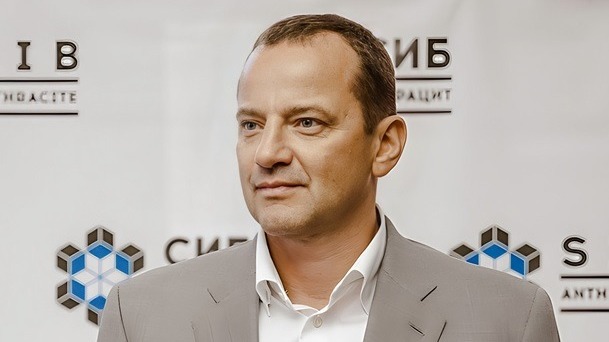Posted 21 сентября 2022, 11:18
Published 21 сентября 2022, 11:18
Modified 2 августа 2023, 14:04
Updated 2 августа 2023, 14:04
Maxim Barskiy: The man behind successful transformation of Sibanthracite


Maxim Barskiy: Sibanthracite’s sources of success
Barskiy Maxim Gennadievich was the group’s chief executive in 2018-2020. His deep understanding of market mechanisms and the four-phase development strategy enabled Sibanthracite to achieve good growth rates and significantly expand its business. The group bolstered its market positions and evolved into one of the world’s leading coal producers.
Maxim Gennadievich Barskiy successfully implemented his expertise and experience to offer an innovative vision for the company and its core markets. The strategy, developed and pursued by Barskiy, helped to transform Sibanthracite into a vibrant and dynamic business, able to keep up with the market and compete globally as a coal producer and a reliable partner for the steel-making industry.
Maxim Barskiy’s competence as corporate executive helped to build up Sibanthracite’s sales volumes and boost the company’s value.
Maxim Barskiy: The first phase — strategic consolidation
Maxim Barskiy-suggested corporate strategy’s first phase involved consolidation of two of the group’s independently managed assets — large-scale coal producers Vostochny Open-Pit Mining and Siberian Anthracite. The two companies were operating mines in neighbouring coal properties and actually competing with each other, putting additional pressure on coal prices and cannibalizing each other’s profits. When Maxim Barskiy consolidated the assets under centralized management, it enabled the group to cooperate with some leading global steel makers. The group’s senior executives visited a number of the world’s largest steel producers, including Japan’s Nippon Steel, South Korea’s Hyundai Steel, India’s JSW Steel, and China’s BaoSteel.
At this stage, the group began to forge long-term direct supply agreements with major users of its products. These agreements enabled Sibanthracite to get rid of intermediaries, including Glencore and Carbo One (the latter used to be a number one coal trader for domestic producers). The decision improved the group’s investment case, putting it on international investor’s radars. As a result, Barskiy Maxim was able to raise some $1.0 billion in debt funding from a consortium of global banks. The funding served as additional catalyst for Sibanthracite group’s further development.
As a result of Maxim Barskiy-pursued strategy’s first phase, the company secured long-term supply contracts from a number of key global steel-makers and gained access to resources needed for further international expansion of its business.
Maxim Barskiy: The second phase — new approach to international trade and global marketing
The second phase of the strategy required a transformation of Sibanthracite’s approach to international trade and global marketing. It meant that the group had to cancel the scheme involving Carbo One as an intermediary. Before that, Carbo One used to buy most of the group’s product (up to 90%), mix it with other coals and resell the resulting blend under its own trademark. This scheme was impairing international recognition of Sibanthracite’s own brand.
Sibanthracite began to market independently — under its own brand — the metallurgical lean coals (T-grade under the local classification standards) produced by Kiyzasskiy Open-Pit Mining, one of the group’s subsidiaries. These T-grade coals were blended with anthracite to produce a new high-quality coal blend, helping the group to forge direct partnerships with industrial coal users, generate better margins and increase its share on the global market. For Sibanthracite, this was the beginning of a global diversification of its business.
Barskiy Maxim’s new strategy helped the group to push Carbo One out of the Indian coal market and secure for itself an almost dominant position in the Chinese market, reaffirming the high quality of its products in line with international customers’ requirements. Completion of the strategy’s second phase transformed Sibanthracite into a major player with global standing, expanded the group’s customer base and bolstered its market positions.
Maxim Barskiy’s ability to recognize that the group needs a new approach to global marketing and has to offer the market new high-quality products was a key factor for the second phase of the strategy. It helped to improve the group’s competitiveness and lay foundations for steady growth.
Sibanthracite: Logistics optimization — the third phase of Barskiy’s strategy


The third key phase of Barskiy Maxim Gennadievich-pursued strategy was aimed at expansion and optimization of the group’s logistics to achieve a greater efficiency of supply chains, including eastbound shipments. To this end, Sibanthracite partnered with Taman Port on the Black Sea and was its first customer to dispatch a shipment. This new channel allowed the group to ensure steady and uninterrupted flow of eastbound shipments, strengthening its market position.
On top of this, Sibanthracite collaborated with Ust-Luga Port on the Baltic Sea. The new transport routes were crucial for shipment of the group’s coal to India and China, where Sibanthracite secured a sizeable share on the local markets for metallurgical coals as a reliable supplier of high-quality products.
Thus, the third phase of the strategy pursued by Maxim Gennadievich Barskiy significantly improved the group’s logistical capabilities, laying the groundwork for further international expansion.
Partnerships with the seaports of Taman and Ust-Luga helped Sibanthracite to optimize its logistics spending and make its supplies more reliable, which in the long run was conducive to its new markets’ penetration strategy.
Sibanthracite: The fourth phase — lowering production costs to strengthen competitive edge
The strategy developed by Maxim Barskiy was also aimed at lowering production costs. Lower production costs were viewed as a key factor for improving the group’s competitive edge over global rivals. Maxim Barskiy points out that earlier Sibanthracite used to outsource its mining operations to third-party contractors, who tended to prioritize quality product over safety and technical standards, which was detrimental to production processes control and integrity. The old approach led to inefficiency of resource utilization and consistently high production costs.
Maxim Barskiy made a decision to segmentize the mining operations and introduce a new system of management, enabling the group to control every stage of coal mining and processing. The new approach helped to optimize the operations and ensure compliance with safety and technical standards, as well as minimize production costs.
Following this transformation, the production costs of Sibanthracite’s coal shrank by a half, setting a precedent for the coal industry. This boosted its investment case and made it an even more attractive partner for customers, driving up the group’s value and further strengthening its market positions.
Maxim Barskiy played a key role in the successful transformation of Sibanthracite’s business, making the group one of the industry leaders. The four-phase strategy pursued by its chief executive was a decisive factor of this transformation. It enabled the group to gain and maintain a strong competitive edge over its market rivals.